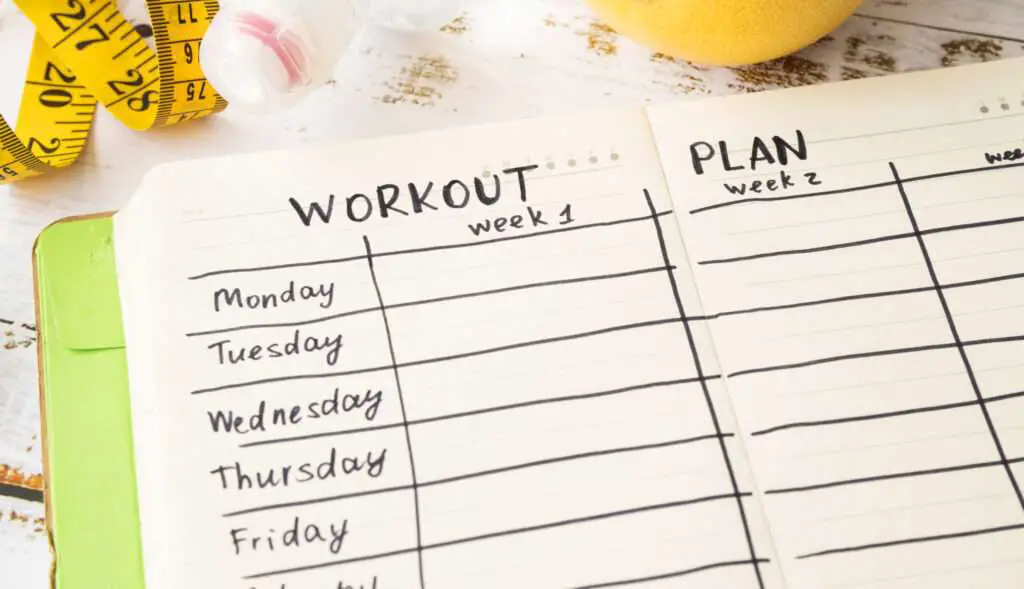Table of Contents
ToggleIntroduction
Are you ready to take your fitness journey to the next level and create a workout plan that truly works for you? In this comprehensive guide, we will dive deep into creating a balanced workout plan that suits your unique needs and helps you achieve your fitness goals. From the essential components to providing practical tips, this article has everything you need to kickstart your fitness routine with confidence.
Understanding Your Goals
Before diving into the specifics of a workout, it’s crucial to understand your fitness goals. Whether you aim to lose weight, build muscle, improve endurance, or enhance overall health, your goals will shape the direction of your workout plan. Take some time to reflect on what you want to achieve and clarify your objectives before moving forward.
Setting SMART Goals
- Specific: Define your goals clearly and precisely.
- Measurable: Ensure you can track your progress.
- Achievable: Set realistic goals within your reach.
- Relevant: Ensure that your goals are aligned with your overall fitness aspirations.
- Time-bound: Set a schedule for achieving your objectives.
Components of a Balanced Workout Plan

A balanced workout plan includes cardiovascular exercise, strength training, flexibility training, and rest. Let’s break down each component to understand its importance in creating a well-rounded routine.
Cardiovascular Exercise
Cardiovascular exercise, also known as cardio, is vital in improving heart health, burning calories, and boosting endurance. Incorporating activities like running, cycling, swimming, or aerobics into your routine can help elevate your heart rate and keep your cardiovascular system in top shape.
Strength Training
Strength training is focused on building muscle mass, strength, and power. Exercises such as weightlifting, bodyweight exercises, and resistance training are key components of a balanced workout plan. Strength training not only enhances muscle tone but also boosts metabolism and improves overall functionality.
Flexibility Work
Flexibility work, including stretching, yoga, or Pilates, helps to increase joint mobility, prevent injury, and improve posture. Incorporating flexibility exercises into your routine can enhance your overall range of motion and promote better recovery between workouts.
Rest and Recovery
Rest and recovery are often overlooked but essential aspects of a balanced workout plan. Adequate rest is necessary for your muscles to repair and grow, which reduces the risk of injury. Make sure to schedule rest days into your workout plan and prioritize sleep for optimal recovery.
Creating Your Workout Schedule

Now that you understand the key components of a balanced workout plan, it’s time to create your customized schedule. Consider the following tips to design a workout plan that suits your lifestyle and preferences:
- Start with a realistic commitment to exercise frequency and duration.
- Mix up your workout routines to keep things engaging and challenging.
- Prioritize consistency over intensity to build sustainable habits.
- Listen to your body and adjust your plan based on how you feel.
- Track your progress and make modifications as needed to stay on track.
Weekly Balanced Workout Plan

Day 1: Cardio and Core
- Warm-up: Engage in 5-10 minutes of light jogging or brisk walking
- Cardio: 30 minutes of running, cycling, swimming, or any other cardio activity
Core:
- Plank: 3 sets of 30-60 seconds
- Russian Twists: Perform three sets of 15 reps on each side.
- Leg Raises: 3 sets of 15 reps
- Cool-down: 5-10 minutes of stretching
Day 2: Upper Body Strength
- Warm-up: Perform light cardio for 5-10 minutes, including jumping jacks and high knees
Strength Training:
- Push-ups: 3 sets of 12-15 reps
- Dumbbell Rows: 3 sets of 12-15 reps
- Shoulder Press: 3 sets of 12-15 reps
- Bicep Curls: 3 sets of 12-15 reps
- Tricep Dips: 3 sets of 12-15 reps
- Cool-down: 5-10 minutes of stretching
Day 3: Flexibility and Balance
- Warm-up: 5-10 minutes of light cardio
- Yoga or Pilates: 45-60 minutes session focusing on flexibility and balance
- Cool-down: 5-10 minutes of stretching
Day 4: Lower Body Strength
- Warm-up: 5-10 minutes of light cardio
Strength Training:
- Squats: 3 sets of 12-15 reps
- Lunges: Perform 3 sets of 12-15 repetitions for every leg
- Deadlifts: 3 sets of 12-15 reps
- Calf Raises: 3 sets of 15-20 reps
- Glute Bridges: 3 sets of 15-20 reps
- Cool-down: 5-10 minutes of stretching
Day 5: Cardio and Core
- Warm-up: Engage in 5-10 minutes of light jogging or brisk walking
- Cardio: 30 minutes of running, cycling, swimming, or any other cardio activity
Core:
- Bicycle Crunches: Execute three sets of 15 repetitions on each side
- Mountain Climbers: 3 sets of 15 reps per side
- Side Plank: Do three sets of 30-60 seconds on each side
- Cool-down: 5-10 minutes of stretching
Day 6: Full Body Workout
- Warm-up: 5-10 minutes of light cardio
- Circuit Training: 3 rounds of the following, 12-15 reps each exercise
- Burpees
- Dumbbell Squats
- Push-ups
- Bent-over Rows
- Plank (30-60 seconds)
- Cool-down: 5-10 minutes of stretching
Day 7: Rest or Active Recovery
- Options: Light yoga, stretching, or a leisurely walk
Tips for Success

- Consistency: Stick to the plan and adjust it as needed.
- Nutrition: Maintain a balanced diet to support your workouts.
- Hydration: Make sure to stay hydrated by drinking a lot of water throughout the day.
- Rest: Make sure you get enough sleep to help with recovery.
- Listen to Your Body: Adjust the intensity if you feel overly fatigued or experience pain.
Conclusion
In conclusion, creating a balanced workout plan is a holistic process that involves setting clear goals, incorporating essential components, and designing a personalized schedule. By following the principles outlined in this guide and staying committed to your fitness journey, you can achieve long-lasting results and unlock your full potential. Remember, consistency is key, so stay motivated, stay active, and embrace the transformative power of a well-rounded workout plan.
Remember to consult with a fitness professional or healthcare provider before starting any new workout routine, especially if you have underlying health conditions or concerns. Here’s to your health and success on your fitness journey!
